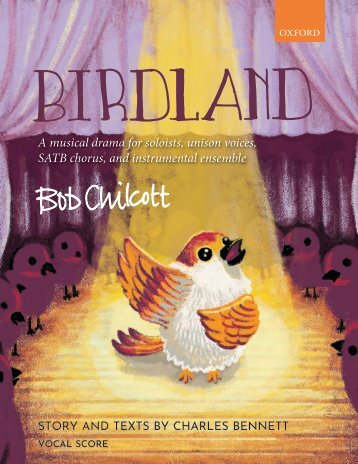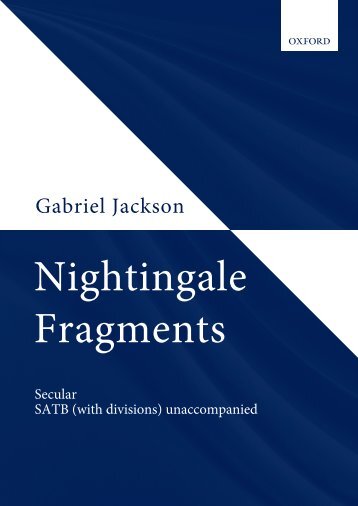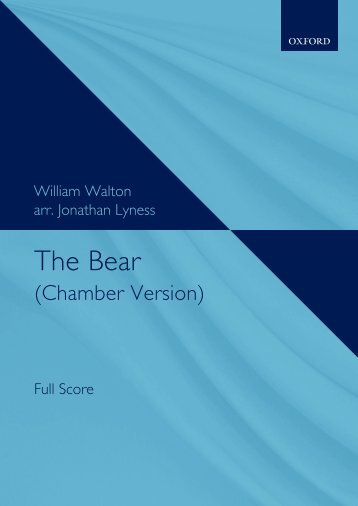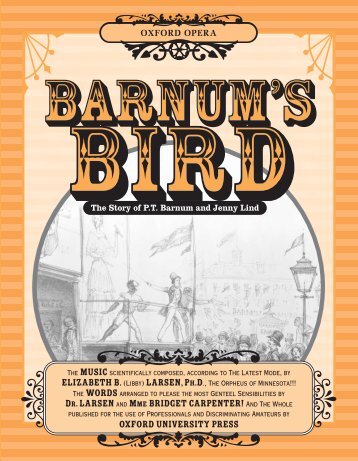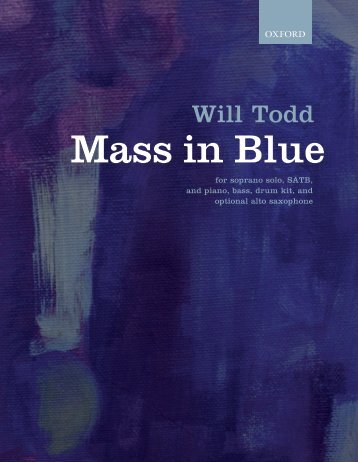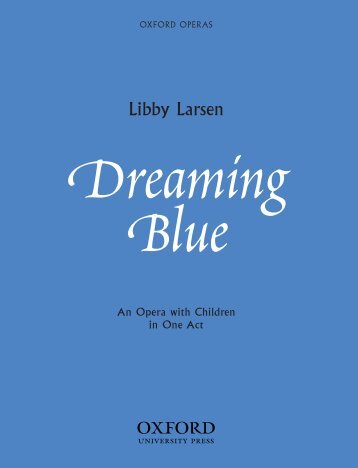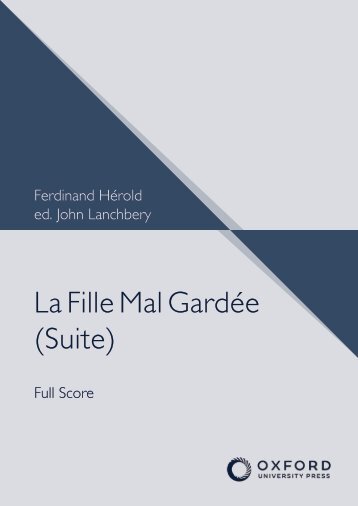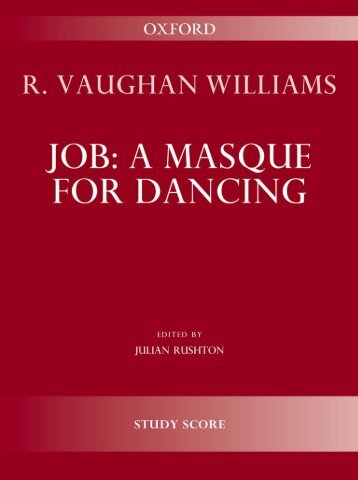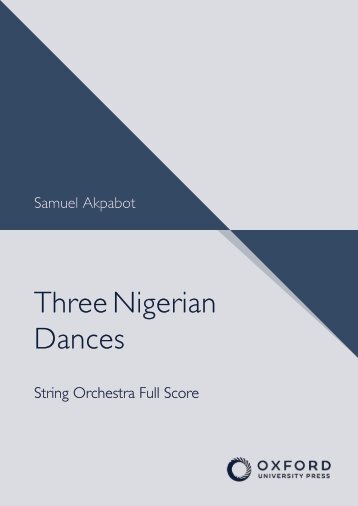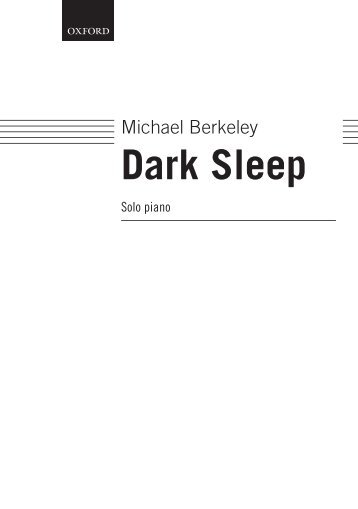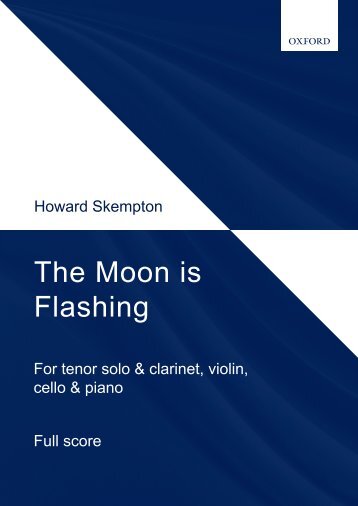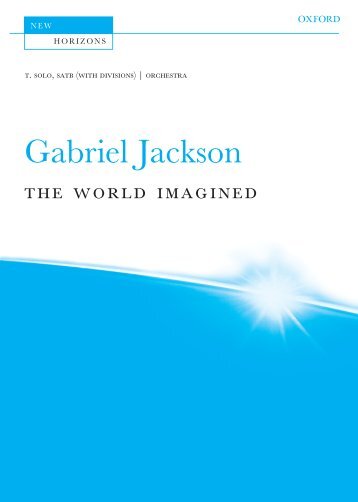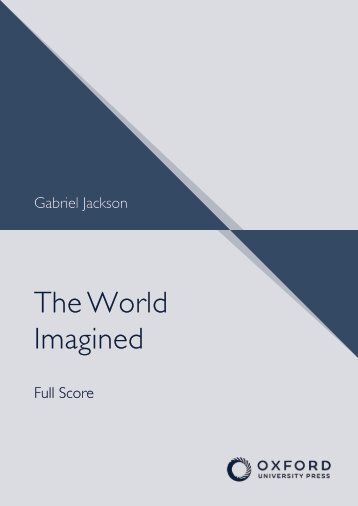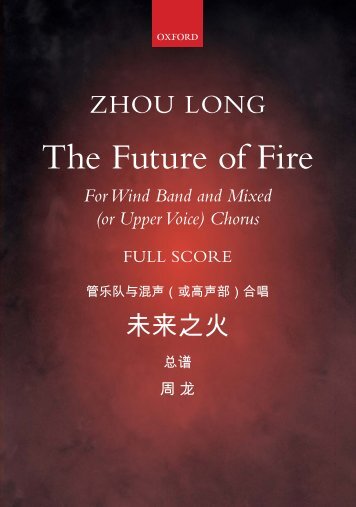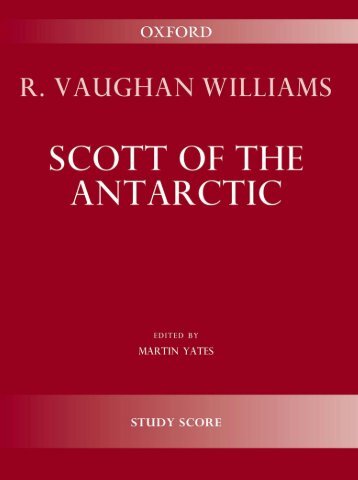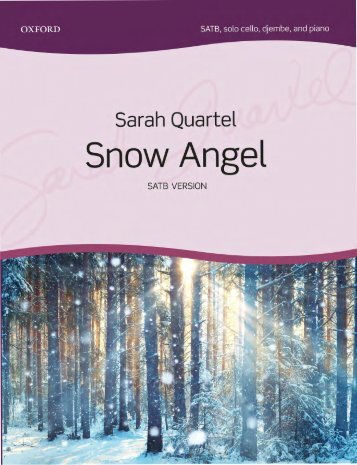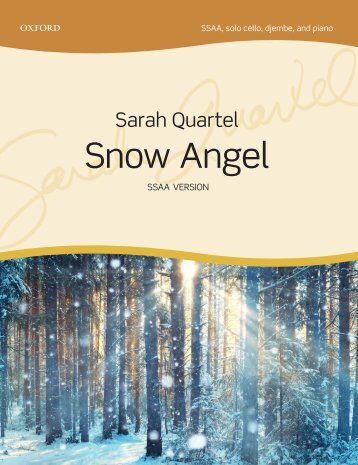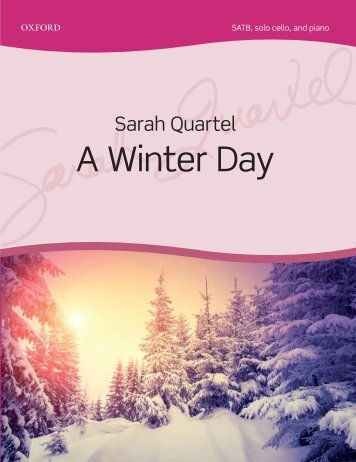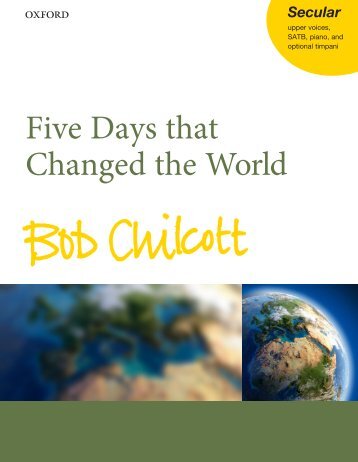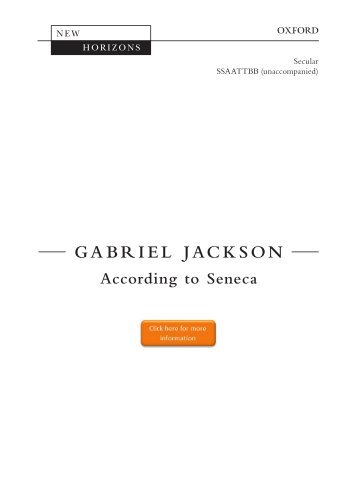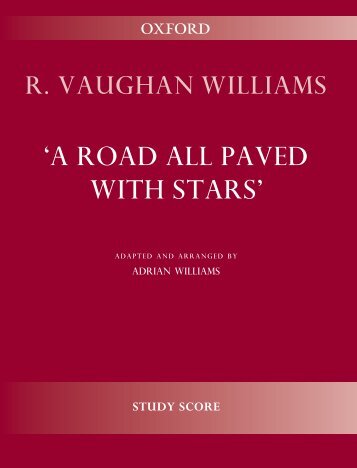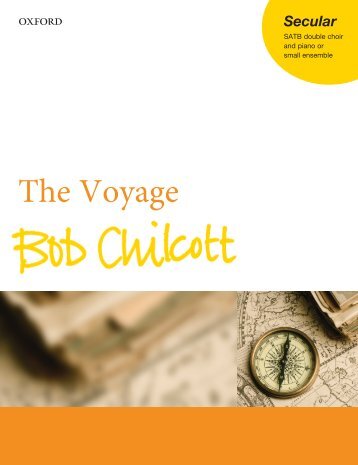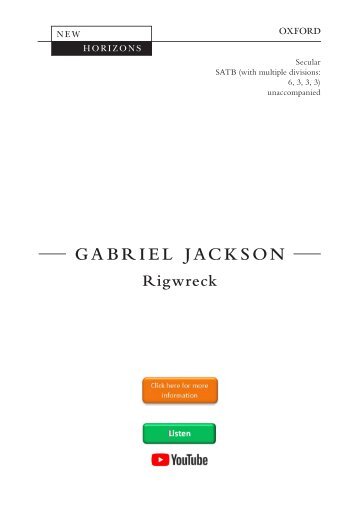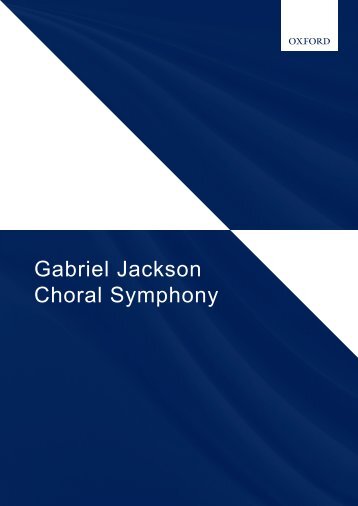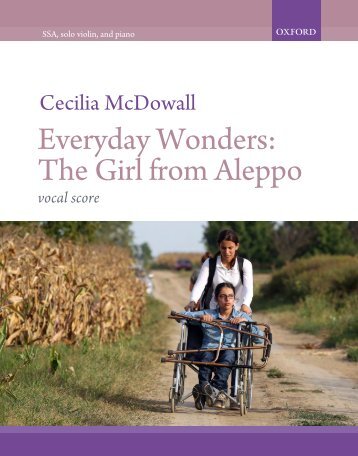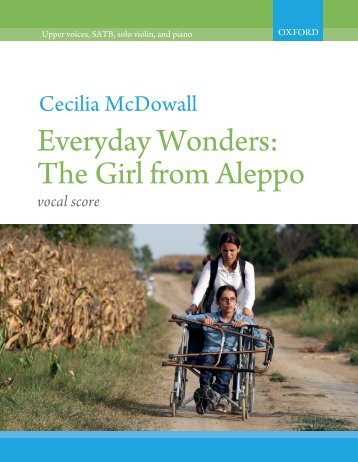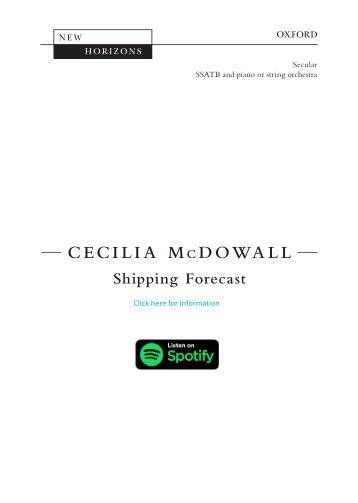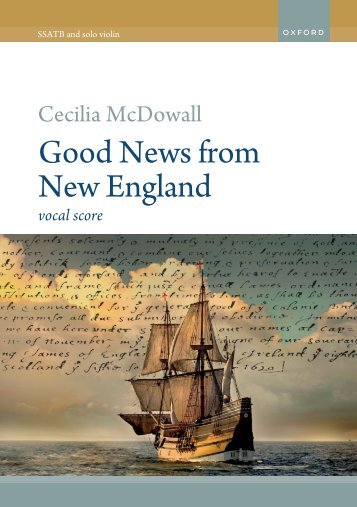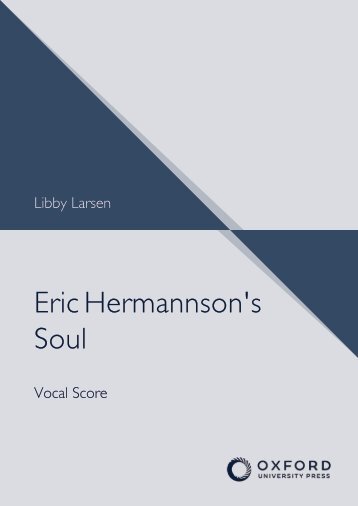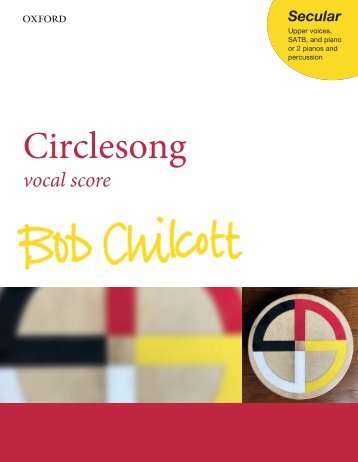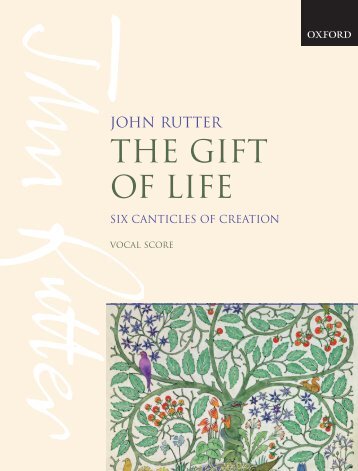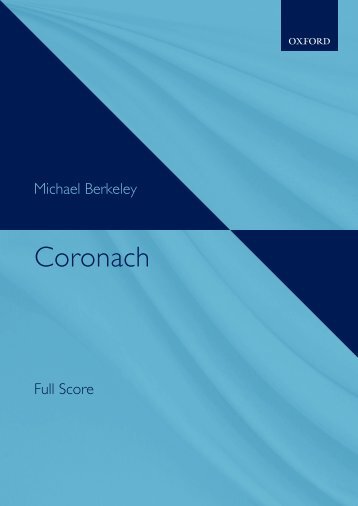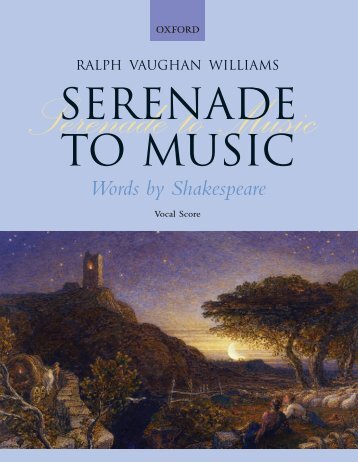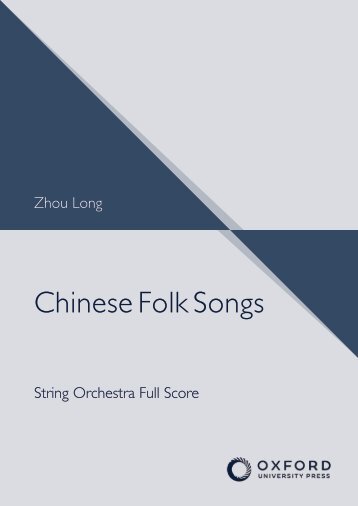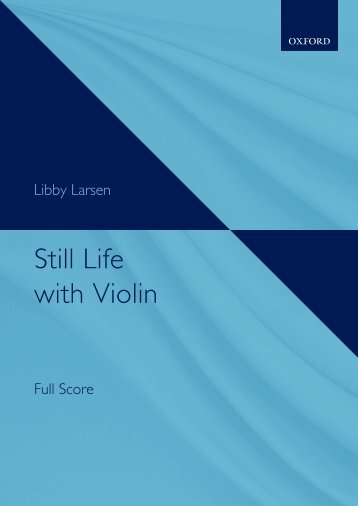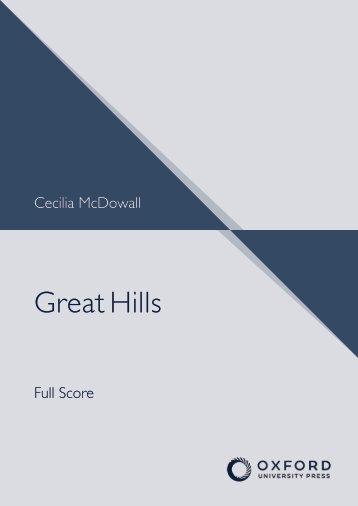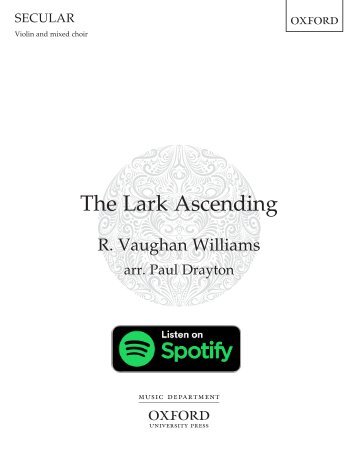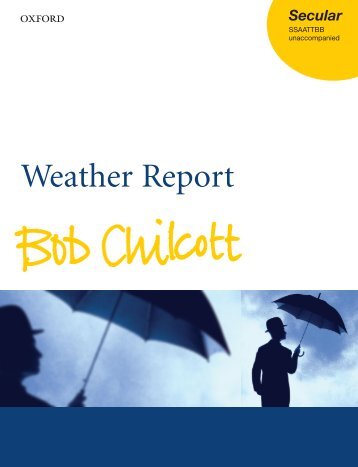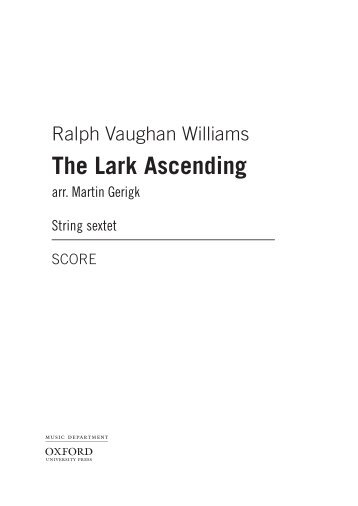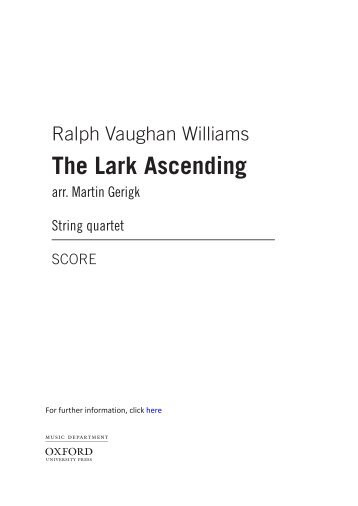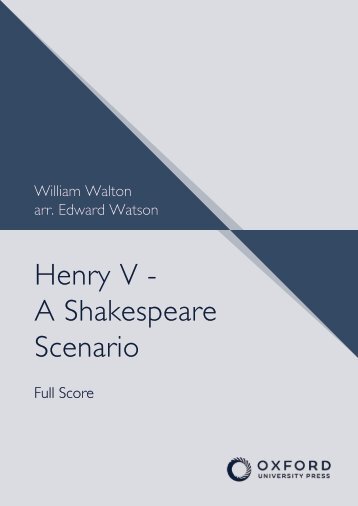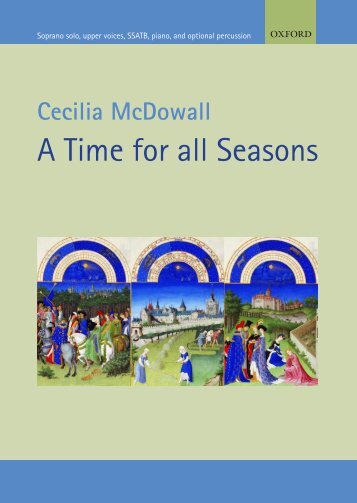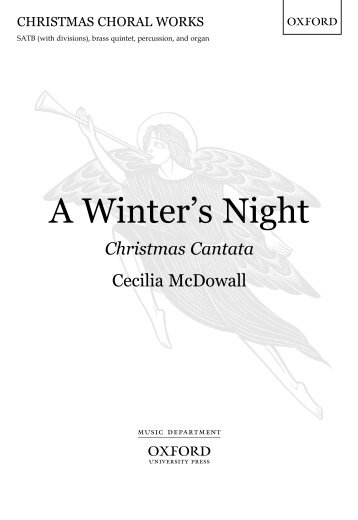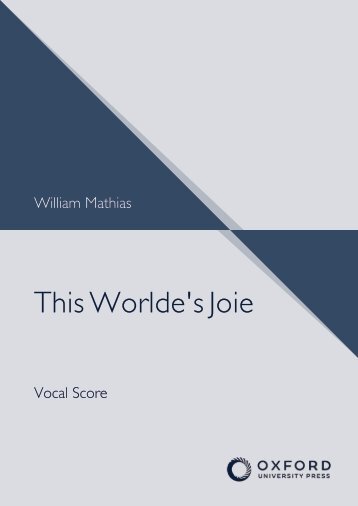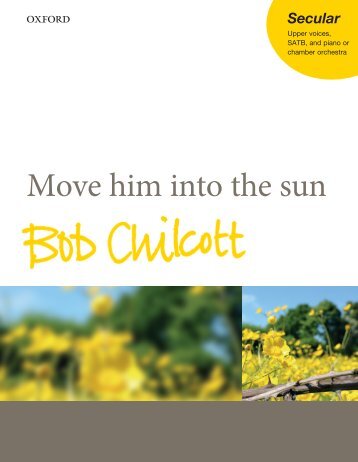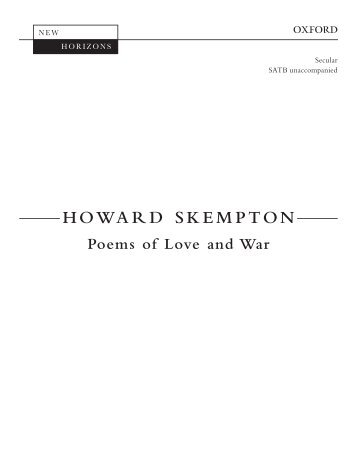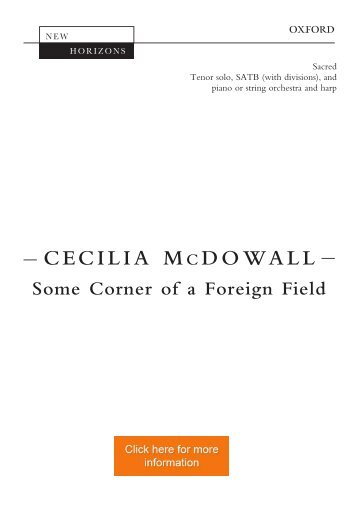
Oxford Programming by Theme
Oxford University Press is proud to publish musical works by some of the most significant composers of the 20th and 21st centuries, with a catalogue that includes a broad range of choral, orchestral and chamber music.

Themes
Select a theme from the list below to view playlists and perusal scores.
- Animals
- Colours
- Dances
- Day and Night
- Elements: Earth
- Elements: Fire
- Elements: Ice
- Elements: Water
- Historical Figures
- Journeys and Transport
- Life and Death
- Light and Dark
- Music about music and sound
- Myths, Legends, and Folktale
- Nature
- Royalty and Ceremony
- Rivers and Oceans
- The Seasons
- War and Conflict
Libby Larsen - Still Life with Violin
- Text
- Still life with violin
- Libby larsen
- Wwwoupcom
Libby
Libby Larsen Biography “Music exists in an infinity of sound. I think of all music as existing in the substance of the air itself. It is the composer’s task to order and make sense of sound, in time and space, to communicate something about being alive through music.” — Libby Larsen Libby Larsen (b. 24 December 1950, Wilmington, Delaware) is one of America’s most prolific and most performed living composers. She has created a catalogue of over 200 works spanning virtually every genre from intimate vocal and chamber music to massive orchestral and choral scores. Her music has been praised for its dynamic, deeply inspired, and vigorous contemporary American spirit. Constantly sought after for commissions and premieres by major artists, ensembles and orchestras around the world, Libby Larsen has established a permanent place for her works in the concert repertory. Larsen has been hailed as “the only English-speaking composer since Benjamin Britten who matches great verse with fine music so intelligently and expressively” (USA Today); as “a composer who has made the art of symphonic writing very much her own.” (Gramophone); as “a mistress of orchestration” (Times Union); and for “assembling one of the most impressive bodies of music of our time” (Hartford Courant). Her music has been praised for its “clear textures, easily absorbed rhythms and appealing melodic contours that make singing seem the most natural expression imaginable.” (Philadelphia Inquirer) “Libby Larsen has come up with a way to make contemporary opera both musically current and accessible to the average audience.” (The Wall Street Journal). “Her ability to write memorable new music completely within the confines of traditional harmonic language is most impressive.” (Fanfare) Libby Larsen has received numerous awards and accolades, including a 1994 Grammy as producer of the CD: The Art of Arlene Augér, an acclaimed recording that features Larsen’s Sonnets from the Portuguese. Her opera Frankenstein, The Modern Prometheus was selected as one of the eight best classical music events of 1990 by USA Today. The first woman to serve as a resident composer with a major orchestra, she has held residencies with the California Institute of the Arts, the Arnold Schoenberg Institute, the Philadelphia School of the Arts, the Cincinnati Conservatory, the Minnesota Orchestra, the Charlotte Symphony, and the Colorado Symphony. Larsen’s many commissions and recordings are a testament to her fruitful collaborations with a long list of world-renowned artists, including The King’s Singers, Benita Valente, and Frederica von Stade, among others. Her works are widely recorded on such labels as Angel/EMI, Nonesuch, Decca, and Koch International. In 2001, two new recordings were released on Koch International: Love After 1950, performed by mezzo-soprano Susanne Mentzer (for whom the song cycle was written), with Craig Rutenberg, piano; and an album of her orchestral works, including the world premiere of her fifth symphony, Solo Symphony, performed by the Colorado Symphony under the direction of Marin Alsop. Libby Larsen is a vigorous, articulate champion of the music and musicians of our time. In 1973, she co-founded (with Stephen Paulus) the Minnesota Composers Forum, now the American Composers Forum, which has been an invaluable advocate for composers in a difficult, transitional time for American arts. Larsen’s commitment to the wider issue of music in society has led her to activity on a national level: she has served on the boards of the American Symphony Orchestra League, Meet the Composer, and on the Music Panel of the National Endowment for the Arts. She has been Vice President of the American Music Center and a director of the College Music Society. Consistently sought-after as a leader in the generation of millenium thinkers, Libby Larsen’s music and ideas have refreshed the concert music tradition and the composer’s role in it.
for Pamela Frank Libby Larsen STILL LIFE WITH VIOLIN Instrumentation Solo Violin Piccolo Timpani 2 Flutes Percussion 1 2 Oboes —Vibraphone, Bass drum, Wood block (medium), 2 Clarinets (B!) Suspended cymbal, Tambourine, Snare drum 2 Bassoons Percussion 2 4 Horns (F) —Orchestral bells, Tam-tam (large), Suspended cymbal, 3 Trumpets (B!) Marimba, Snare drum, Temple blocks, Tom-tom (low) Tuba Strings Duration 12:30 Program Note There is something pure and unattainable about the beauty of strings, in particular solo violin. It is unlike any other orchestral instrument. The violin, capable of speaking and singing in human range, takes the spirituality that humans can only express in their vocal range and carries that spirituality beyond breath, beyond range, and almost beyond comprehension. Bach knew this. His works for strings and voice, such as his “Aus liebe will mein heiland sterbe,” from the St. Matthew Passion, or any of his unaccompanied suites for strings, demonstrate his sublime understanding of where the voice stops and the instruments take over, all to express the infinite and immortal range of the soul. Still Life with Violin is like a Turner painting—it is an impressionist’s struggle to paint the violin with orchestral color. It is as if the painting is experienced from two perspectives: close up, and from across a space, as if viewed through a constantly active zoom lens. My purpose is to invite the listener to listen closely to the beauty of the violin as an instrument within an orchestral palette and at the same time to breathe in and deeply feel the power of the violin to speak beauty. —Libby Larsen
- Page 1: 2 Libby Larsen Still Life with Viol
- Page 5 and 6: 4 Picc. 7 [ ! Q Q Q Q (1.) Fl. 1 2
- Page 7 and 8: 6 16 [ Picc. ! Q 4 Q 4 3 S S T . 4
- Page 9 and 10: 8 B poco animato push ahead rall. a
- Page 11 and 12: 10 poco accel. 42 [ Picc. ! Q Q Q Q
- Page 13 and 14: 12 Picc. 58 [ ! Q Q Q Q Q Q Q Q E p
- Page 15 and 16: 14 Picc. 74 [ ! 4 5 Fl. 1 2 ! 4 5 O
- Page 17 and 18: 16 poco rit. 86 [ Picc. ! 5 Q 3 Q 4
- Page 19 and 20: 18 96 [ Picc. ! Q Q Q 4 Q C C W CO
- Page 21 and 22: 20 Picc. rit. K Primo tempo 108 [ !
- Page 23 and 24: 22 t 117 [ Picc. ! 4 3 Q 4 h C> t C
- Page 25 and 26: 24 M 127 [ Picc. ! 3 W C Q Q 4 Q 4
- Page 27 and 28: 26 141 [ Picc. ! Q Q Q Q 3 Q 4 4 Q
- Page 29 and 30: 28 155 [ C C C > Picc. ! T h T S Q
- Page 31 and 32: 30 Picc. 169 [ ! 4 6 Fl. 1 2 ! 4 6
- Page 33 and 34: 32 > t 184 C [ B Picc. ! S Q Q Q Q
- Page 35 and 36: 34 $ = * 198 [ Picc. ! Q h C > T h
- Page 37 and 38: 36 209 [ Picc. ! Q Q Q Q Q 1. CO CO
- Page 39 and 40: 38 Picc. rit. $ = 52-56 rall. 220 [
- Page 41 and 42: 40 232 . C B . C B [ Picc. ! Q 4 6
- Page 43: for online perusal only ISBN 0-19-3
Inappropriate
Loading...
Mail this publication
Loading...
Embed
Loading...

